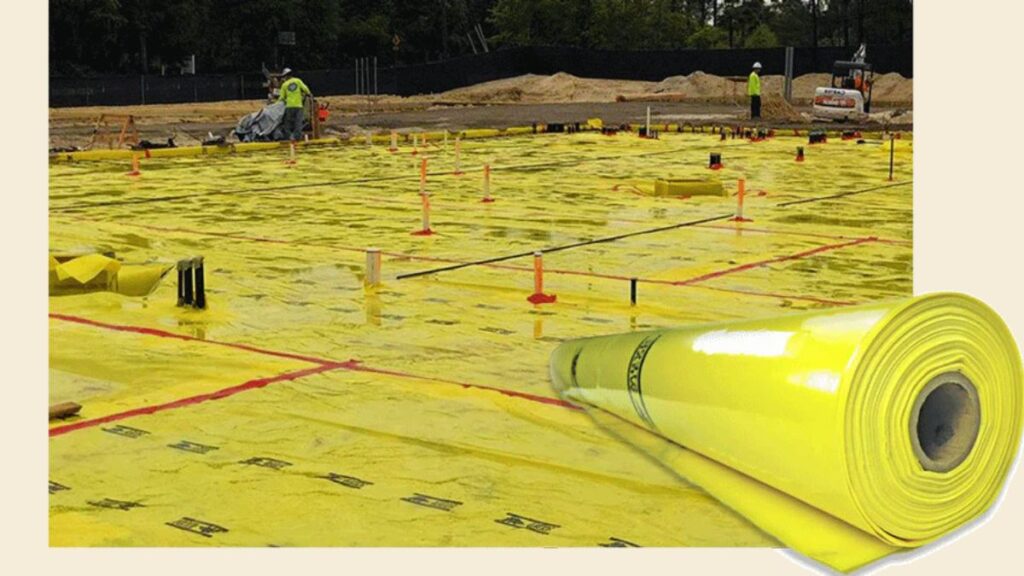Visqueen is a name that pops up often in construction and landscaping circles, but many people aren’t quite sure what it really is or how to use it effectively. If you’ve found yourself puzzled over this versatile material, you’re not alone. Visqueen refers to polyethylene sheeting used primarily as a vapor barrier or moisture control solution. Its applications are vast—from protecting foundations to serving as an efficient cover for outdoor projects.
But just having Visqueen on hand isn’t enough; proper installation is key to reaping its benefits. Whether you’re tackling a DIY project at home or managing a larger construction job, knowing how to install Visqueen correctly can make all the difference in ensuring your space remains dry and protected from unwanted moisture issues.
In this guide, we’ll break down everything you need to know about installing Visqueen properly so that you can maximize its effectiveness and longevity. Ready? Let’s dive into the details!
What is Visqueen?
Visqueen is a brand name commonly associated with polyethylene sheeting, a highly versatile material used in various applications. Made from high-density plastic, it comes in different thicknesses and sizes to suit specific needs.
Often found on construction sites, Visqueen serves primarily as a vapor barrier. It prevents moisture from seeping into structures, safeguarding them against water damage. This makes it crucial for foundations and crawl spaces.
Beyond construction, Visqueen has applications in landscaping as well. Gardeners use it to create temporary greenhouses or cover plants during harsh weather conditions.
Its durability and resistance to tearing make Visqueen an excellent choice for protecting surfaces while also being lightweight enough for easy handling and installation. Whether you’re shielding your home or managing outdoor projects, understanding what Visqueen offers can set the foundation for effective moisture control strategies.
Why is Proper Installation Important?
Proper installation of visqueen is crucial for achieving its full benefits. When laid correctly, it serves as an effective barrier against moisture and contaminants, protecting structures from potential damage.
Improper installation can lead to gaps or tears. These weaknesses allow water vapor to seep through, undermining the integrity of your project. A well-installed layer keeps areas dry and prevents mold growth.
Additionally, proper placement maximizes energy efficiency. It contributes to a tighter building envelope that reduces heating and cooling costs over time.
Another factor is durability; when installed efficiently, visqueen can last longer and perform better under various conditions. Homeowners save money in repairs when they invest in correct installations upfront.
Taking the time to install visqueen properly pays off significantly by enhancing both performance and longevity.
Tools and Materials Needed
To successfully install visqueen, having the right tools and materials is essential. Start with high-quality visqueen plastic sheeting. Choose a thickness that suits your project needs—typically 6 mil or thicker offers better durability.
You’ll also need a utility knife for cutting the material to size. A tape measure helps ensure accurate measurements, while construction adhesive can secure edges in place.
Don’t forget about safety gear; gloves protect your hands from sharp edges, and knee pads are useful if you’re working on floors or uneven surfaces.
Masking tape will help seal seams effectively, preventing moisture from seeping through. If you’re covering large areas, consider using a roller or squeegee to smooth out air bubbles as you lay down the sheeting.
Having these items on hand makes installation smoother and ensures maximum effectiveness of your visqueen barrier.
Step-by-Step Guide for Installing Visqueen
Start by measuring the area where you plan to install visqueen. Accurate measurements will ensure a snug fit and minimize waste.
Next, cut your visqueen to size using a sharp utility knife. Make sure to leave extra material around edges for proper sealing.
Lay the visqueen flat on the ground or surface, ensuring there are no wrinkles or folds. This helps in creating an effective barrier against moisture and contaminants.
Secure the edges with adhesive tape designed for plastic sheeting. Overlap seams by at least 12 inches to maintain airtight seals.
If you’re covering walls or ceilings, use staples or fasteners suitable for heavy-duty applications. Ensure that each attachment point is secure to avoid sagging over time.
Inspect your installation thoroughly. Look for any gaps or missed areas that may compromise its effectiveness before putting everything back in place.
Common Mistakes to Avoid
One of the most common mistakes when installing visqueen is neglecting surface preparation. Always ensure that the area is clean and dry. Any debris or moisture can compromise the effectiveness.
Another frequent error involves improper overlap between sheets. A minimum of 12 inches overlap is essential to create a solid barrier. Skipping this step might lead to gaps where water can seep through.
Some people underestimate the importance of securing edges properly. Failing to use tape or adhesive can make your installation vulnerable, allowing air and moisture infiltration.
Ignoring environmental factors like temperature can impact performance. Installing visqueen in extreme conditions may result in material failure down the line. Pay attention to weather conditions before starting your project for optimal results.
Benefits of Properly Installed Visqueen
Properly installed Visqueen offers numerous benefits that can greatly enhance your project’s efficiency.
This durable polyethylene sheeting acts as an effective barrier against moisture, preventing water damage to structures. By keeping out dampness, it helps maintain a dry environment, crucial for both residential and commercial spaces.
Another advantage is its role in energy efficiency. A well-placed layer of Visqueen can minimize air leaks and improve insulation. This not only lowers heating and cooling costs but also creates a more comfortable living space.
Visqueen also provides protection during construction or renovation projects. It shields surfaces from dust, debris, and spills while allowing work to proceed without interruptions.
Additionally, using Visqueen supports compliance with building codes that require moisture control measures. Meeting these regulations helps avoid potential fines or costly repairs down the line.
Tips for Maintenance and Replacement
Regular inspections are crucial for maintaining Visqueen. Look for signs of wear and tear, such as tears or punctures. Addressing these issues promptly can prevent larger problems down the line.
Keep your Visqueen clean. Dirt and debris can compromise its effectiveness. A gentle wash with mild soap and water will help maintain its integrity.
When it comes to replacement, timing matters. If you notice a decline in performance or visible damage, it’s time to act. Don’t wait until leaks become apparent; proactive measures save money.
Store any unused Visqueen rolls in a cool, dry place away from direct sunlight to prolong their lifespan. Proper handling during installation also helps avoid unnecessary damage that could lead to early replacement needs.
Stay informed about the types available on the market since advancements often introduce better options for specific applications.
Conclusion
Visqueen is a versatile product that plays an essential role in various construction and landscaping applications. Proper installation maximizes its effectiveness, ensuring it serves its purpose effectively.
Understanding the importance of using the right tools and following a clear step-by-step guide can make all the difference in achieving optimal performance. Avoiding common mistakes further enhances longevity and functionality.
Properly installed Visqueen offers numerous benefits, from moisture control to enhanced durability for structures. Regular maintenance checks will help you catch any wear or damage early on.
When used correctly, Visqueen is more than just a protective barrier—it’s a critical element in building strong foundations and preventing future issues. By taking care during installation and upkeep, you ensure that your investment pays off in the long run.







